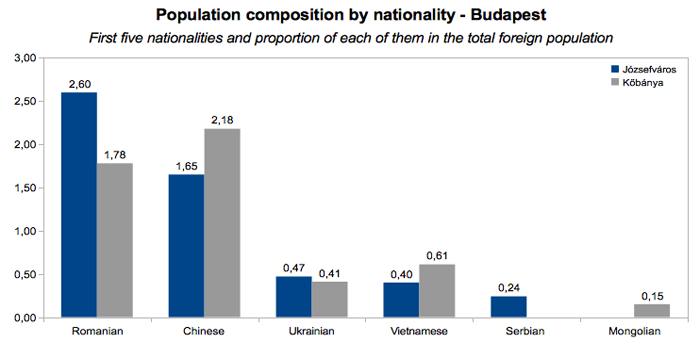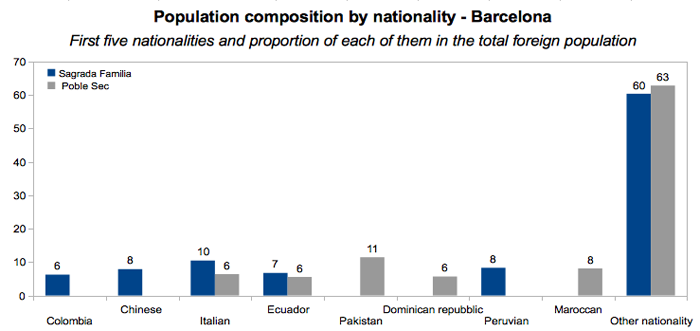>>> Size and density of population <<<
We define neighbourhoods as sub-municipal urban entities, not necessarily administrative units, whose identity is recognisable by city inhabitants. For this reason, the target neighbourhoods selected as case studies vary for dimension and institutional relevance. As a matter of fact, investigated neighbourhoods have from around 30,000 to around 80,000 residents, except for Werderau and Langwasser which have smaller populations.
The latter are not however small-size neighbourhoods since the density of population is rather low too, like in Kòbania. On the contrary, in Poble Sec and Sagrada Familia population is very concentrated. The density of the other target neighbourhoods is more similar and is between 12,000 and 18,000 residents/km2.

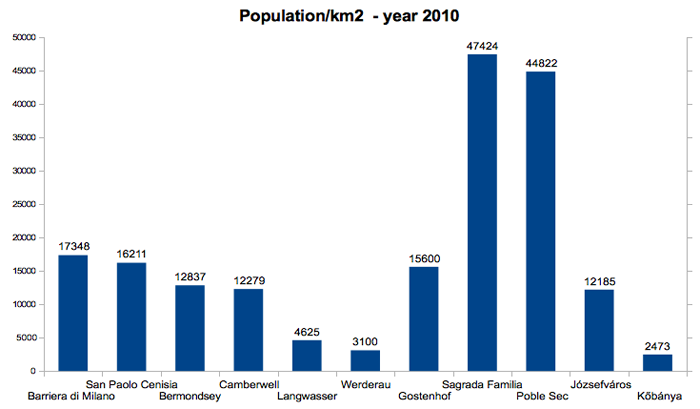
>>> Change of population size <<<
The demographic balance [(population t1-population t0)/population t0 *100] is the result of the combination of natural balance referred to birth and deaths [(birth-death)/total population *100] and migratory balance referred to people inflows and outflows [new residents – cancelled residents/ total population *100].
The annual variation of population is negative or nearly zero, except for Hungarian neighbourhoods. More precisely, both the natural and migratory balance are negative or around zero in almost all the target neighbourhoods. The only neighbourhoods where inflows outnumber the outflows are the Spanish and Hungarian ones (in Hungarian neighbourhoods the data are not available but positive demographic balance is certainly produced by positive migratory balance since natural balance is negative).
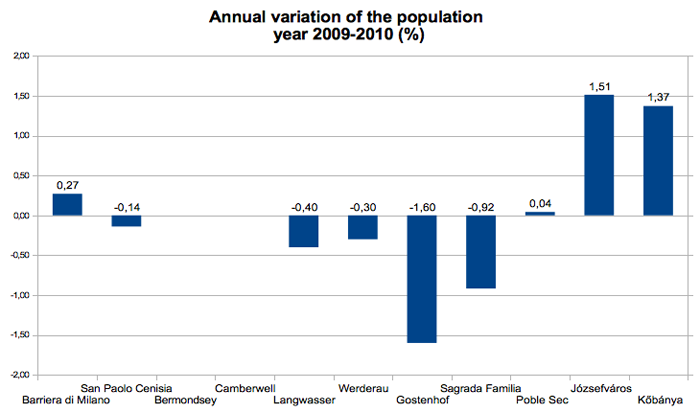

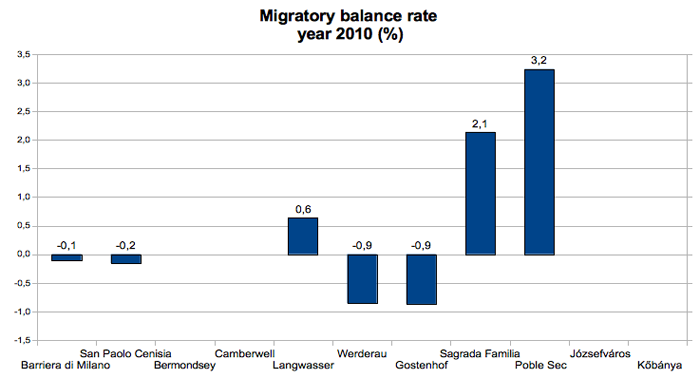
>>> Sex and age composition of population <<<
Males and females are rather evenly distributed in the target neighbourhoods. British neighbourhoods are the youngest while the German neighbourhoods of Langwasser and Werderau are the oldest (click on images to enlarge)
>>> Share of foreign population <<<
The comparison on immigrant population is hampered by differences in data collection at neighbourhood level across Europe. For instance, in London neighbourhoods and boroughs data are referred to foreign-born or ethnic minorities, not to foreign residents.
Looking at the following data we can see that the share of foreign population changes a lot also between neighbourhoods of the same city, being significatly higher in Barriera di Milano, Gonstenhof and Poble Sec. On the contrary, both Hungarian neighbourhhods have a very low rate of foreign residents.
We must however take into account that the level of diversity changes a lot depending if one considers consider ethnic background or nationality. For instance, in the same year the proportion of people with an ethnic/minority background in total population is much higher than share of residents with foreign nationality in Langwasser I (37%), Werderau (48%), Gosterhof (54%), and in Southwark, the bourough where Camberwell and Bermonsdey are located (52%).
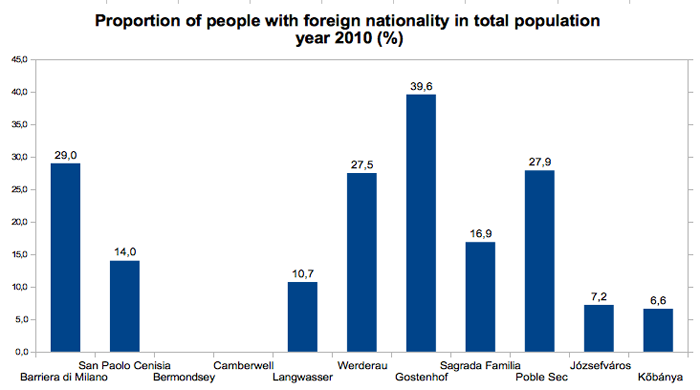
>>> Nationalities of foreign residents <<<
National composition of immigration population is obviously influenced by each country’s immigration history (e.g. mostly Asians and Eastern Europeans in Hungarian neighbourhoods, a vast majority of Turks and immigrants from Western Balkans in German ones, etc.). However, it varies also between neighbourhoods of the same city (i.e. the higher presence of Turks in Werderau, of Pakistanis in Poble Sec or of Peruvians in San Paolo if compared to the other neighbourhood of the same cities)
